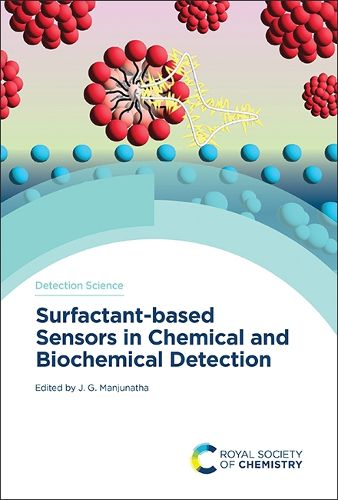Readings Newsletter
Become a Readings Member to make your shopping experience even easier.
Sign in or sign up for free!
You’re not far away from qualifying for FREE standard shipping within Australia
You’ve qualified for FREE standard shipping within Australia
The cart is loading…






Describing the importance of surfactants in electrochemical investigations related to biologically and environmentally vital chemicals, this book charts the progression of highly responsive electrochemical sensors using surfactants as a modifying agent in the sensor field. It provides contributed chapters from respected researchers on information concerning the activity of target molecules and electron transfer kinetics arising at the surface of the fabricated sensor materials.
Surfactant-based electrochemical sensors are of great interest in the quest to find low-cost, fast and highly responsive sensing devices and one aim of this book is to help improve the competence and knowledge in this newly emerging interdisciplinary research area. Attracting an audience of students, academics, industrialists and engineers, it will interest researchers seeking to use non-toxic sensors in their detection challenges.
$9.00 standard shipping within Australia
FREE standard shipping within Australia for orders over $100.00
Express & International shipping calculated at checkout
Describing the importance of surfactants in electrochemical investigations related to biologically and environmentally vital chemicals, this book charts the progression of highly responsive electrochemical sensors using surfactants as a modifying agent in the sensor field. It provides contributed chapters from respected researchers on information concerning the activity of target molecules and electron transfer kinetics arising at the surface of the fabricated sensor materials.
Surfactant-based electrochemical sensors are of great interest in the quest to find low-cost, fast and highly responsive sensing devices and one aim of this book is to help improve the competence and knowledge in this newly emerging interdisciplinary research area. Attracting an audience of students, academics, industrialists and engineers, it will interest researchers seeking to use non-toxic sensors in their detection challenges.